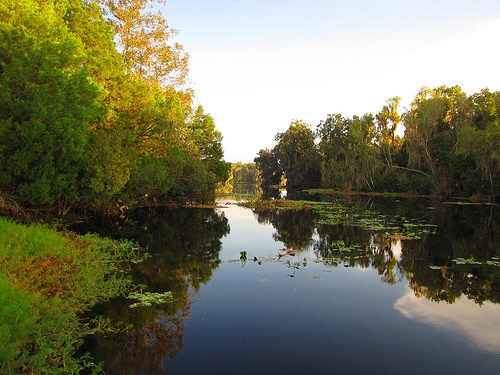We have much more to do and your continued support is needed now more than ever.
Supreme Court to Water Resource Managers: Just Say No to Filling Wetlands and Floodplains?
With last week’s 5-4 ruling in Koontz v. Saint John’s River Water Management District, the Supreme Court has made it harder for state and local water resource managers to protect the public’s interest in wetlands and floodplains.

Our First Line of Defense in a Changing Climate
As the wetland scientists said in their brief, wetlands provide essential services and economic value to people, businesses, and communities. They improve water quality, provide flood control and coastal storm mitigation, support fish, shellfish, bird, and other wildlife populations, and sequester climate-harming carbon. The destruction and degradation of wetlands trigger a cumulative loss of wetland functions and services, harming people, communities, and wildlife.
Hurricane Sandy, Hurricane Katrina, perennial flooding in the Mississippi River Basin – we are finally learning from the drumbeat of extreme weather events that our wetlands and floodplains are our first line of defense against damaging storms and rising tides.
Just this week, the President announced a comprehensive climate plan highlighting the importance of protecting and restoring our shorelines to protect communities from these hazards.
Federal, state and local water resource managers are just now beginning to incorporate these lessons into their civil works, watershed, and land use planning and decision-making – beginning to leverage these natural systems to protect communities.
Yet, despite the imperative to protect communities in the face of a changing climate, a five-justice majority of the Court has tied the hands of water resource managers, making it more difficult for them to work with landowners and developers to permit safe and environmentally sound developments while protecting and restoring wetlands and floodplains.
Five Key Takeaways From This Week’s Supreme Court Decision
- Good news: The Court acknowledges the state’s interest in wetland and floodplain conservation and mitigation: “Insisting that landowners internalize the negative externalities of their conduct is a hallmark of responsible land-use policy, and we have long sustained such regulations against constitutional attack.”

A sand hill crane in the wetlands of the St Johns River (photo credit: flickr / anoldent)
- Bad news: The majority now puts the burden on state and local resource managers to prove the “essential nexus” and “rough proportionality” between the impacts of developing in these waters and the permit conditions required to mitigate those impacts.
- After Koontz, water resource managers must be very careful what they ask for. It seems they must now prove this nexus and proportionality even – as in the Koontz case – for possible mitigation conditions they might discuss with developers in trying to negotiate an environmentally responsible development permit.
- Wetland mitigation conditions should pass muster where they are clearly based on scientifically sound assessments of wetland functions lost and gained in a watershed context, and are otherwise consistent with the “no net loss” of wetlands policy, and the mitigation standards set forth in the National Research Council’s 2001 mitigation report and the 2008 Corps and EPA mitigation rule. However, meeting this burden of proof in each case is resource intensive and requires solid, watershed-specific science.
- After Koontz, the prudent course of action for water resource managers may be to just say no. Proposing to permittees innovative and flexible mitigation conditions can be a trap, ensnaring state and local governments in costly and wasteful litigation. As Justice Kagan says in her dissent, “if every suggestion could become the subject of a lawsuit …the [District’s] lawyer can give but one recommendation: Deny the permits, without giving Koontz any advice – even if he asks for guidance.”
Water Resource Managers Must Protect the Public Interest
What mustn’t happen is for water resource agencies to simply approve development projects in wetlands and floodplains — abandoning their duty to protect the public interest and putting communities and wildlife in harm’s way. The Koontz decision makes their job harder, but conditions on the ground demand that water resource managers use available legal, science, planning, and fiscal tools to protect the public’s interest in wetlands and floodplains.




















